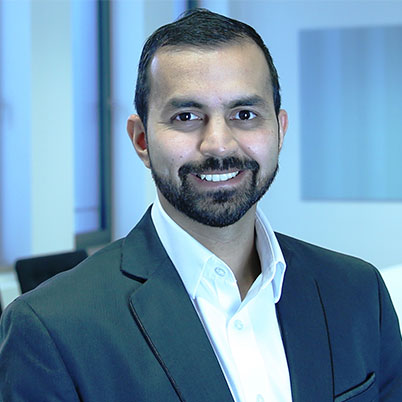Granted, some of this urgency is reflective of the business cycle downturn. But the greater threat comes from the need to finance the new products, services, and business models spawned by multiple converging disruptive forces. These range from electric, autonomous, and increasingly digital vehicles, to new models of personal transport. This convergence is driving the need for wide-ranging increases in spending on new technologies: for example, the R&D spending of ten major automakers has increased 17 percent over the past four years, exceeding revenue growth during the same period. Across the sector, including OEMs and suppliers, the increase in R&D expenditure is even higher, at 22 percent. And the future looks even more expensive.
With so much money needed to finance tomorrow’s cars and business models, the industry is currently seeking costcutting opportunities that go far beyond ordinary measures. Automakers are looking to reduce costs across the board, given the investments needed for future mobility solutions. Consequently, every major automaker is looking to partner or collaborate to reduce their development costs. However, that will not necessarily move the needle in the current environment. Instead, some companies are embracing frugal engineering as a particularly effective way to address this challenge.
UNDERSTANDING THE PRINCIPLES OF FRUGAL ENGINEERING
Frugal engineering seeks to develop products “better, with less,” while finding ways to reduce complexity in all aspects of new product development. It requires companies to take a disruptive approach to products, processes, and most of all, decision making. This includes making product and process innovations, allowing late concept and design freezes, setting hard cost targets, and organizing autonomous engineering units with the freedom to break the rules.
Unlike the automotive industry’s standard ways of developing products that require high-quality functional organizations and lots of available resources, frugal engineering works readily with slack or sub-optimal functions and thrives under severe resource constraints. It uses a bottom-up approach to engineering instead of the traditional top-down method, and relies on an open, distributed innovation process in place of the industry’s typically closed, proprietary one. Furthermore, while standard innovation practices concentrate primarily on components, frugal engineering seeks architectural solutions – a critical step that considers how everything integrates at a vehicle platform level.
THE THREE PRINCIPLES BEHIND FRUGAL ENGINEERING
Rethinking Product Development. Frugal engineering emphasizes back-end innovation and a market focused, agile R&D model. It employs dynamic portfolio management tools, uses just-in-time design techniques, and works around supply chain constraints to deliver optimal products at the lowest possible cost. To achieve this, organizations must align their R&D strategies with their corporate business goals, break up traditional high-cost R&D programs, tear down silos, and reduce bureaucracies. In addition to integrating technical designs with business plans, they must make incentive systems more effective.
Furthermore, frugal engineering requires automakers to engage customers from the outset and throughout the product and ownership lifecycles. This provides the ability to adapt rapidly to unforeseen changes in major areas while implementing cheaper solutions in less important ones. Companies use crowdsourcing, social media, and deep immersion techniques to identify latent needs. They also employ big data analytics to surface insights and, if possible, involve end users in the prototype stages.
EXHIBIT 1: GROWING R&D EXPENDITURES
Source: Company financials, EU Industrial R&D Investment Scoreboard, Pressresearch
Creating more inclusive networks. A second key principle of frugal engineering is “hyper-collaboration.” This encourages organizations to create global R&D networks while also working together intensely with suppliers with a knack for innovation and seeking inspiration from disruptive startups. Working with these partners can help to develop solutions that marshal digital data, refined analytics, and real-time, multiplatform interactions to put the customers at the center of a product and service ecosystem. Hyper-collaboration compels automakers to engage with their industry peers to set and achieve bold goals that they could not otherwise reach, and to share assets and resources with other companies to capture major cost savings. Organizations can gain a competitive edge by using diverse traditional and digital channels to gain insights into future trends, and to engage with a range of players including entrepreneurs, white-hat hackers, startups, inventors and tinkerers, and suppliers from other industries. To make this happen effectively, they must increase their internal agility, monetize intellectual capital, and create an innovation-brokering function.
Fostering a frugal culture. Companies introducing frugal engineering also need to plant the seeds for a frugal culture, which requires bold commitment and dynamic goal setting. This calls for an integrated and systematic approach that can establish bold, credible, and aspirational goals, secure strong top management commitment, and adopt a consistent yet personalized approach to customers and products
It also requires a disruptive business model capable of supporting autonomous development teams. Concurrently, frugal teams must work closely with their business unit sponsors to keep them informed – and then deliver results. They must build on a strong business case, coupled with audacious goals, and employ a process that is focused on engaging consistently with others in the ecosystem and iterating designs and concepts all the way through to user acceptance. Companies should implement frugal engineering on a cross-functional basis across geographies and even seek to test products in complex, resource-constrained emerging markets before deploying them globally.
Furthermore, successful frugal engineering must also adopt the right cognitive models. The emphasis shifts from focusing excessively on complex products with top-shelf features and specifications to satisfying real future customer needs and demands for eco-awareness in developed markets. Then, frugal engineers need to accept that customers in emerging markets will have equally high aspirations and expectations. Adopting a frugal mindset and seeking legitimate innovations thus involves far more than simply finding low-costsolutions.
Taken together, companies need to make frugal engineering initiatives a top priority, use the new frugal customer orientation to motivate employees, and incentivize progress to goals.
VIDEO
APPLYING FRUGAL PRINCIPLES IN THE AUTOMOTIVE SECTOR
Introducing frugal engineering concepts in an established global automaker’s core R&D organization can be traumatic because it tips most established paradigms – flood the zone with resources, rely on legacy processes, set target prices – on their collective ear. Instead, companies should consider a new list of “Dos and Dont’s”. (See Exhibit 2.)
Set and meet audacious goals. There are three things that should matter to the frugal program manager: customer value, time to market, and cost. Frugal teams should have clear-cut objectives for each of these dimensions, with strong followthrough. If companies are not ready to give the program unprecedented autonomy to bend and break the rules to reach these goals, frugal is not the right approach for them.
Staff frugal programs for success. A frugal program requires the full-time deployment of highly experienced staff with good existing networks in the organization. It also needs full autonomy to make decisions on the spot. A group of young, inexperienced engineers tasked to “do something frugal” will never gain the acceptance of the rest of the organization.
Innovate with and for the customer. The best way to learn frugal engineering involves pursuing a disruptive growth program focused on understanding and targeting future and new customer needs. Involve customers as much and as early as possible in the development process and let them decide if the project is on the right path.
For instance, a European company wanted to introduce a vehicle that could compete with the long-time market leader in India. Several other automakers had tried and failed to dislodge this player due to high prices. The company used frugal engineering to design a car with features Indian customers valued highly, such as roomy interiors to haul large families, strong air-conditioning, and advanced navigation and entertainment systems. To keep costs down, the company sourced nearly all parts for the car in India. The vehicle debuted to strong initial sales and received enthusiastic early reviews for targeting Indian consumers at a competitive price point, hitherto deemed unrealistic in the OEM organization.
Hyper-collaborate with new partner networks. A successful German startup that is developing battery-electric delivery vans began an intense open-collaboration approach with more than 80 partners across a whole spectrum of competences and positioning – from price leaders to premium partners. The partners had the freedom to design the product and process at the same time, while following the targets and timeline set upfront by the startup company.
Apply frugal concepts beyond special programs. Frugal engineering is ideal for developing successful growth platforms for emerging markets worldwide, but its benefits and applicability go beyond that. Automakers should identify technical areas where a frugal engineering approach can yield substantial product cost benefits, such as challenging their existing overpriced modular kits in nondifferentiating areas. Ideas might include a frugally-engineered trunk cargo net, rearview mirrors, glove boxes, and much more.
“Frugalize” noncore engineering processes. Not everything in established “Western” automotive product development needs to follow the same product development process. While deadlines and quality gates are generally here to stay, our research suggests that anywhere from 30 percent to 40 percent of a given program’s workload could benefit from a frugal engineering approach, yielding substantial cost and time-tomarket benefits.
Foster competition. One automaker needed a car that would deliver high value for the money. To engender a competitive spirit among its global product development organization, it tasked three R&D teams – two in developed countries, one in an emerging market – to solve the same technology problem. The emerging market team came back with a solution that cost only 20 percent as much as the others. One reason for the emerging market team’s success was that it tapped into partners with reputations for excelling by innovating more with less.
Avoid half-hearted efforts. Perhaps equally important are the things companies should not do when employing frugal engineering principles in their product development organizations. For instance, do not attempt to implement bits and pieces of frugal engineering across the existing organization using “light touch” approaches such as putting posters in the company cafeteria. Do not compromise key performance indicator (KPI) targets to follow through with standard processes, or use existing carry-over parts from other programs or modular kits to save costs and time. Frugal engineering is not about matching customer affordability via target pricing or “downspeccing” existing products. Instead, it seeks to deliver the expected customer experience from scratch in a disruptive way.
Other warnings include not attempting to apply standard validation and quality control processes, and to avoid working in existing central R&D centers – frugal teams need to learn across geographic boundaries. Of course, to do these things means not following existing reporting lines and assuming a more entrepreneurial stance. As much as possible, act like a startup.
EXHIBIT 2: BEST PRACTICES
Source: Oliver Wyman analysis
MAKING FRUGAL ENGINEERING A PRIORITY
The age of gold-plated car design is fading as more automakers recognize the need to conserve the resources and cash needed to meet the many disruptions heading their way. But traditional cost-cutting alone will not do the job, given the highly emotional nature of the car-buying experience. People worldwide seek the best value for the money, not the cheapest possible ride. That reality makes frugal engineering the only real antidote to the overpriced, overengineered vehicles that automakers can no longer afford to make.








